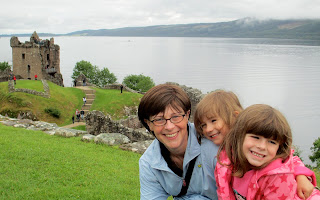 Daniel E. Bollman, AIA
Daniel E. Bollman, AIA
& Amanda Harrell-Seyburn, Associate AIA
Invite You to Join Us to
Celebrate the New Home of
201 1/2 E. Grand River Avenue #2
East Lansing, MI 48823
Drinks. Food Art.
June 3, 2016 I 5:00-8:00 PM
Figure. Flora. Flight.
an Exhibition of Watercolors by Lisse Williams
3.6.16
Open House & Art Exhibition Figure. Flora. Flight.
8.4.14
Eye Candy and Eyesore of the Week
About six months ago, I began writing a regular feature for the Lansing City Pulse. Accepting the assignment that had been undertaken by a colleague, I now write the "Eye Candy of the Week," which highlights "some of the nicer properties in Lansing" and the Greater Lansing area. The feature alternates weeks with "Eyesore of the Week," featuring some of the less desirable properties in the area.
An archive of the writing may be found at lansingcitypulse.com. In addition, my favorties features will be reprinted here on a regular basis. This week's Eye Candy is the Mount Hope Cemetery in Lansing.
http://www.lansingcitypulse.com/lansing/article-10044-eyecandy-of-the-week.html
23.8.12
The Next Generation
Too often, I suspect that we accept that visits to historic castles (not to mention battlefields or prehistoric stone rings) will not interest our children. As with the symphony or ballet, we presume they will take little interest in these outwardly adult activities until they are older. In doing so, we are missing the opportunity to teach them the value of seemingly outdated resources. Therefore, I would suggest that the first step is to take a chance and simply introduce them to these important “sites, buildings, structures and objects.”
Just as we have found with the Network’s educational activities, the availability of age-specific learning materials at the historic sites we visited was invaluable. Naturally, many of the exhibits were text heavy, but instead of disregarding them, we either read short passages to our daughters or helped our six-year old sound out some of the more interesting stories. In addition, many of the sites included activities that were specifically directed to help with younger visitors, including sound recordings, videos and take-away activity sheets. The period dress-up costumes were consistently popular.
Which is not to say that only the child-friendly exhibits were able to teach. Though I don’t expect my daughters understood the entire story offered in a film regarding Castle Urquhart, even my three year old was able to discern why history has dubbed Britain’s King Edward I, “The Hammer of the Scots.” The film relayed the story of Edward’s army laying siege to the castle and, as it ended, my daughter asked me, “Why is the king evil?”
Following the film, we toured the castle grounds, located on the shore of Loch Ness. Of particular interest was the damaged-yet-accessible Grant tower (shown at left above). We climbed through the foundations of several kitchens, stood in the remains of the dovecot and looked through the castle’s water gate, which once allowed besieged occupants to receive deliveries via the adjacent loch.
As with the castellan’s latrine niche above, the girls were drawn to those building parts and displays that are absent in our modern environment. Drawbridges and low doorways were a common favorite.
This year, the members of the Network’s Board of Directors have been challenged to provide an educational experience to a primary school student in their lives. I will be championing this effort on behalf of the Education Committee, and would welcome stories about how others are teaching the preservationists of the future.
20.6.12
Rock the World
Today, the Rock the World Race hosts its inaugural event in Grand Ledge, Michigan. 'east arbor architecture' is a proud sponsor and enthusiastic partner, joining efforts with Fitzpatrick Structural Engineering to create the vertical obstacles, from the Panama Canal to the Eiffel Tower.
The event also included a small course for future mud-runners.

28.5.12
Ties to the Past

From its appearance and siting, I suspect the building also may have had connections to the railroad, possibly used as an observation platform. Intrigued, I set to finding a way to imbue the wee building with new life and a new use. Given its size and isolated location, I wanted to make it as self-sufficient as possible by employing passive efforts* to heat, light and ventilate the building.
The repurposed building is shown on the left, with the existing building shown for comparison. Subsequent entries will detail a more thorough analysis of the building and its possibilities.
*Is ‘passive efforts’ an oxymoron?





